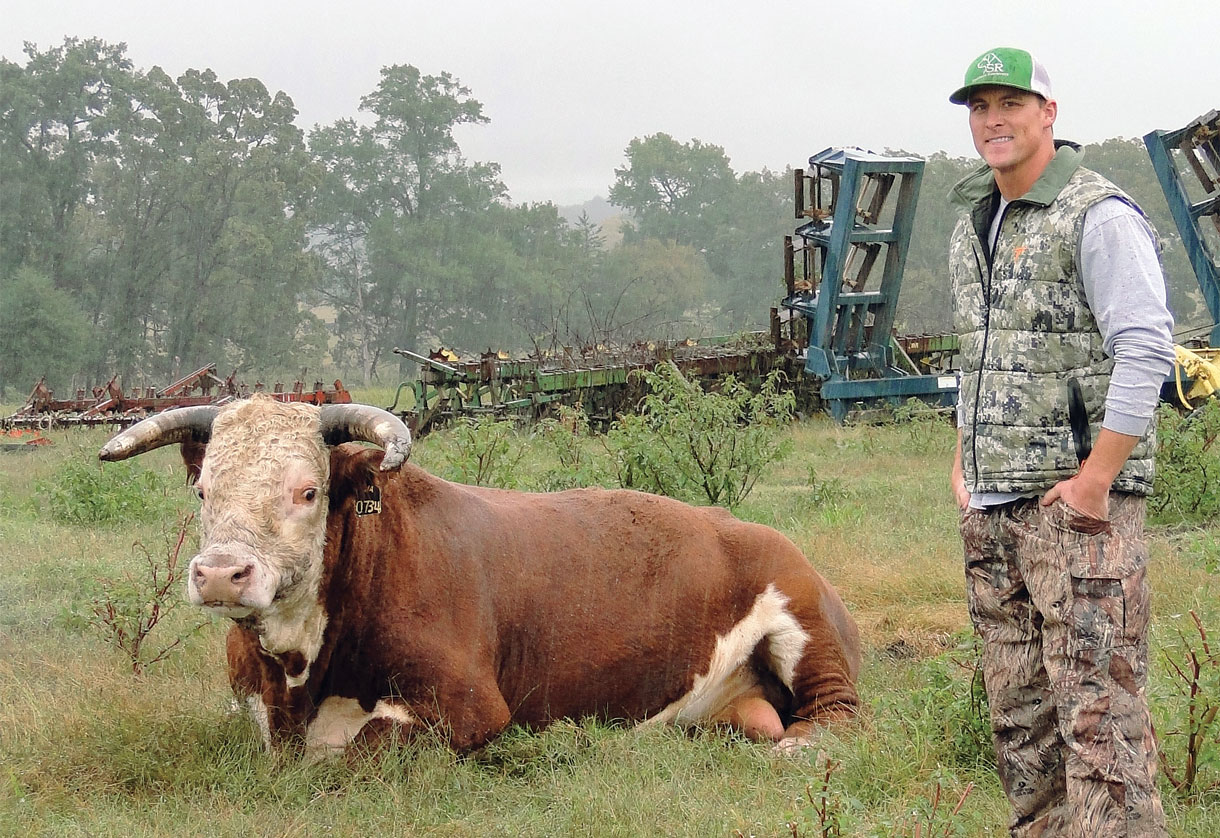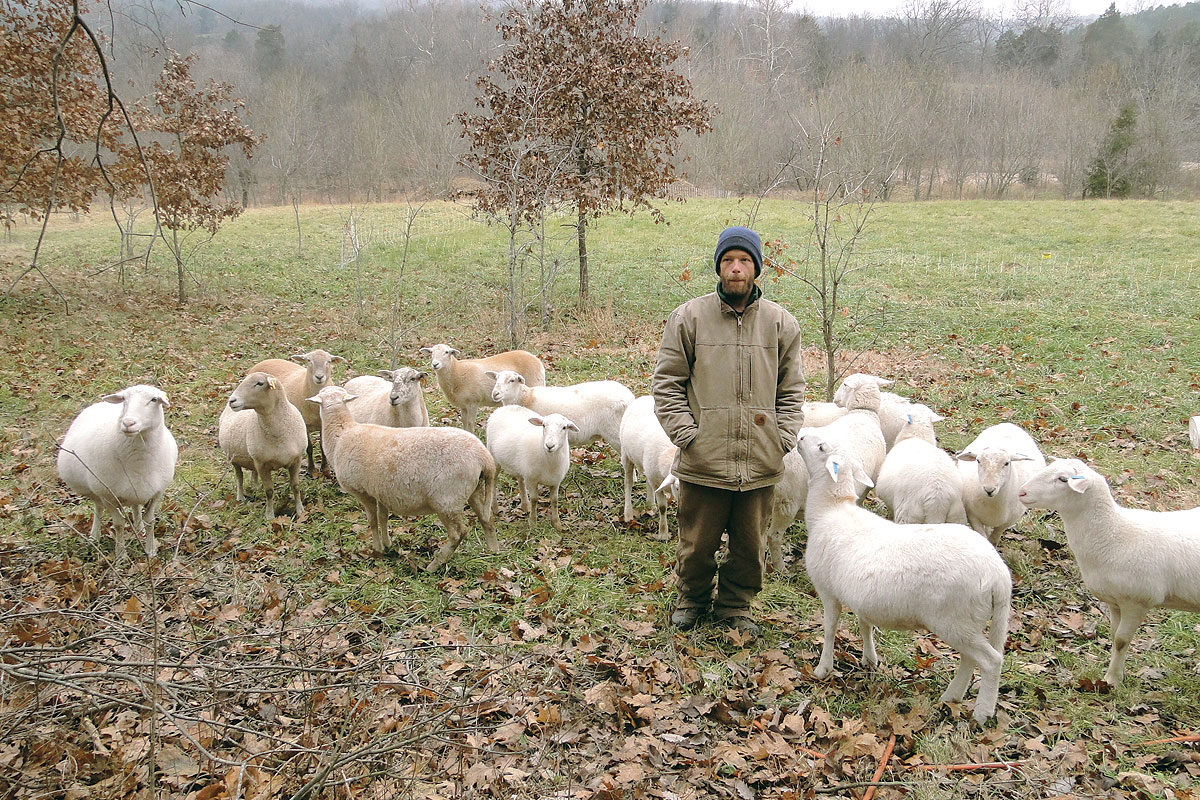
The James brothers manage the operations of the farm established by their grandfather
Jack James will be 91 in January. When he was 24 or 25, he lived up the road when some nearby land came for sale. He purchased a small acreage which has grown into 1,500 acres of pasture for cattle and 1,000 acres of row crops. The land, which is not all contiguous, covers a 5 mile radius which includes both Franklin and Crawford counties in Arkansas. In addition, the cattle operation leases a 160-acre pasture from a family who is not yet ready to sell that particular piece though they have sold the rest. Jack’s son Kent grew up and worked with Jack until he was 45 and started an eBay company for industrial sales.
Jack’s grandsons, Brandon and Kent, now manage the operation with Brandon managing the cattle side of the operation and Kent the crop side.
Brandon has maintained the Hereford breed that his grandfather prized because of the breed’s historical importance as well as its gentle disposition. Brandon does most of the work himself but has one or two helpers as needed depending upon the time of the year. He has 300 full-blooded mommas, some of which are registered. The herd comes out of the Line 1 Domino Hereford bloodline, a powerful bloodline in the Hereford industry with most of the James’ bulls having been purchased from the Cooper Hereford Ranch in Three Forks, Montana. Brandon keeps 10 to 15 bulls at a time with the oldest and most productive now 11 and about to retire.
Because Jack was busiest in the summer and fall with his crops, he had calves mostly in late fall because he had more time to focus on the cattle business at that time. A very small spring calving herd was composed of mommas who were out of sync for one reason or another. While Brandon follows the same practice, timing has been moving toward September and October so calves are ready to eat grass when the grass is ready.
“Having one main calving season makes the operation easier and more affordable to maintain because work all of the cattle as one group and avoid duplication of labor,” explained Brandon.
The James’ cattle are sold as stockers or as breeding stock. Culling mommas takes place for the usual reasons such as failing health in terms of eyes or feet, age, and substandard calves due to size and/or weight. However, a more unusual criteria is coloring. One coloring factor has to do with weeding out those who do not have white eye patches because those patches seem to indicate lesser chances of eye cancer or the Hereford breed susceptibility to pinkeye. The second factor has to do with Brandon’s understanding of market preference.
“Hide color does not change the quality of the meat, but customers seem to prefer darker colored Herefords so we cull and select for that,” said Brandon.
Brandon admits to having tried both AI and ET but not with the success he was hoping for. Consequently, natural breeding is the method of choice. He weans calves at 6 to 8 months and backgrounds until they reach 600 to 900 pounds depending upon market conditions.
Brandon typically keeps 30 to 40 heifers as possible replacements and sells extras either as breeding stock or at the stockyards. He rarely sells bred heifers. He also maintains 15 to 40 young bulls as breeding bulls and sells through word-of-mouth, print advertising and social media, mostly off the farm. Market calves are sold in Joplin, Mo., or Oklahoma City because buyers interested in the quality of animal he sells tend to congregate there.
“Marketing requires more networking than most people realize, and I try to take advantage of that avenue,” Brandon said.
The size of the herd requires 10 tons of feed every 10 to 14 days during peak season which at this moment includes over 190 just weaned calves. Due to a concern about the possibility of losing calves before vaccinations take effect, this year Brandon is feeding just weaned calves a supplemented feed to resolve this possible issue.
Fields are mostly Bermuda and clovers with some fescue and mixed grasses. Three hundred acres of hay are harvested an average of three times per year with a goal of 3,000 round bales. Chicken and turkey litter are the preferred fertilizers and purchased locally though commercial fertilizer is purchased at the co-op when needed. The pastures have been established for many years so spraying with 2, 4-D or Grazon usually takes place every other year unless needed for two years in a row. Spot spraying is for thistles and pigweed as well as false Ment and persimmon sprouts.
“We used to use winter wheat, but it’s more trouble than it’s worth because our ground is uneven,” explained Brandon.
As is typical with most people in production agriculture, time is the biggest issue. Consequently, Brandon’s short-term goal is to rebuild fences and corrals while looking long term toward continued genetic development and improvement of herd quality. Also, like most ranchers and farmers, Brandon enjoys raising his sons, 10-year-old Kenley and 9-year-old Bronson, in the country. Few boys can resist the allure of four wheeling and spending time with their dad.






